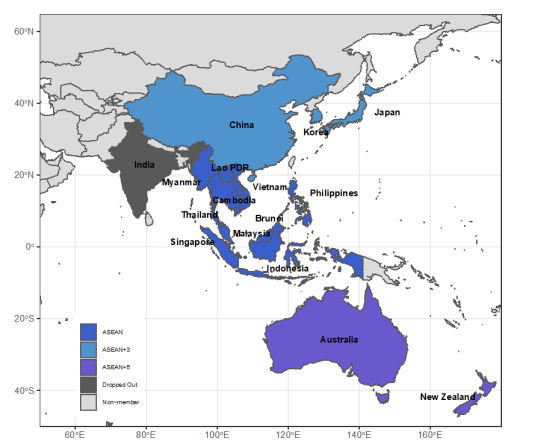MARKET OPPORTUNITY
Written by Milcah
MARKET OPPORTUNITY: The RCEP agreement eliminates at least 92% of import tariff
April 01, 2022
Picture 1. RCEP membership
According to the Trade Remedies Administration – Ministry of Industry and Trade, the provisions on trade remedies in the RCEP Agreement are mentioned in Chapter 7, including some complicated technical issues such as the prohibition on the application of the calculation method 0 (zeroing), the obligation to disclose material facts and to handle confidential information in anti-dumping and anti-subsidy investigations and specific commitments on transitional RCEP safeguards.
The Trade Remedies Administration – Ministry of Industry and Trade said that the Regional Comprehensive Economic Partnership (RCEP) was signed by 10 ASEAN member countries and five partner countries, namely Australia, China, Japan, South Korea, and New Zealand. Zealand signed on 15 November 2020 and entered into force on 1 January 2022.

Picture 2. RCEP has been signed by signatory countries
The RCEP Agreement creates a large market with 2.2 billion consumers, accounting for about 30% of the world’s population and GDP up to 26.2 trillion USD (equivalent to 30% of global GDP).
RCEP will eliminate at least 92% of import tariff lines between the signatories within 20 years, establishing common rules for e-commerce, trade in goods, and intellectual property rights.
According to the Trade Remedies Department – Ministry of Industry and Trade, in 2021, Vietnam’s exports to RCEP countries will reach 132.32 billion USD, up about 16% compared to 2020, and imports 238.5 billion USD, up 28%. compared to 2020.
According to the World Bank’s forecast, after RCEP comes into effect, Vietnam will be the country with the highest growth in trade and income among the members of the Agreement.
However, besides the positive effects that the Agreement brings, Vietnam also faces many challenges such as the large trade deficit from this bloc (especially from China, Korea, and ASEAN), the ability to export goods that are subject to trade remedies, and other technical barriers.
So far, Vietnam has been subject to 93 trade remedy measures investigated by RCEP members, affecting industries such as steel, fiber, wood, etc. In the opposite direction, Vietnam has also investigated. 23 trade remedy cases against RCEP countries, mainly in the industries of metals, fibers, sweeteners…
Regulations on trade remedies in the RCEP Agreement are mentioned in Chapter 7, which contains a number of complex technical issues such as the prohibition of the application of the zeroing calculation method, public obligations disclosure of material facts, and handling of confidential information in anti-dumping and countervailing duty investigations and specific commitments on transitional RCEP safeguards.
To implement these regulations, support Vietnamese businesses to take advantage of the Agreement’s incentives as well as proactively protect domestic production during the implementation process, the Ministry of Industry and Trade has issued Circular 07/2022/ TT-BCT dated March 23, 2022, guiding the implementation of trade remedies in the RCEP Agreement. Circular No. 07/2022/TT-BCT includes 04 Chapters 15 Articles.
In the coming time, the Trade Remedies Administration will coordinate with associations and localities to disseminate, guide, and support businesses to understand trade remedy provisions in the RCEP Agreement and Circular No. 2022/TT-BCT to protect its legitimate interests in the process of joining the Agreement.
Source: VNMedia
Related articles
Pepper industry market in the first 7 months of 2020
Cashew nuts labeled “Binh Phuoc” are super cheap
The Inauguration Ceremony of BRC standard cashew Factory – Binh Phuoc Branch –
